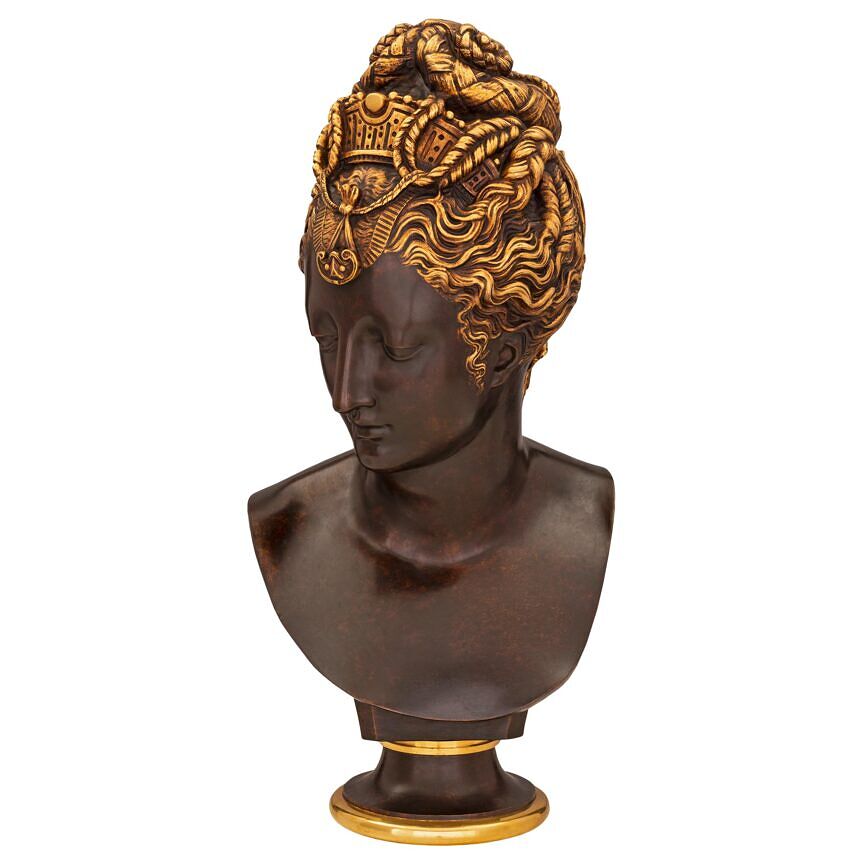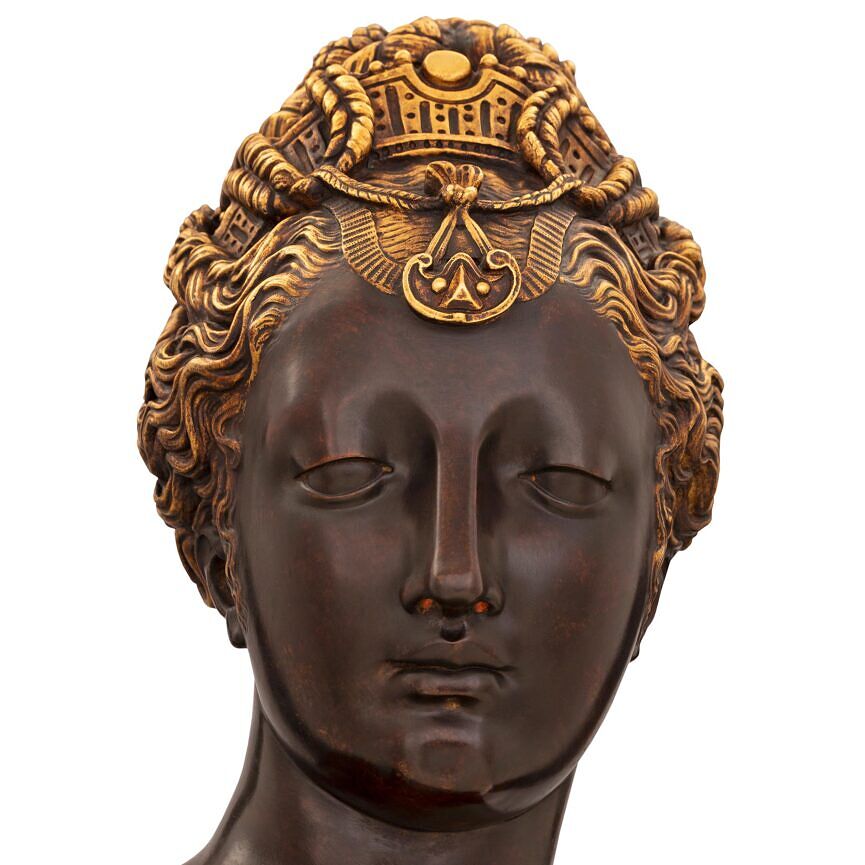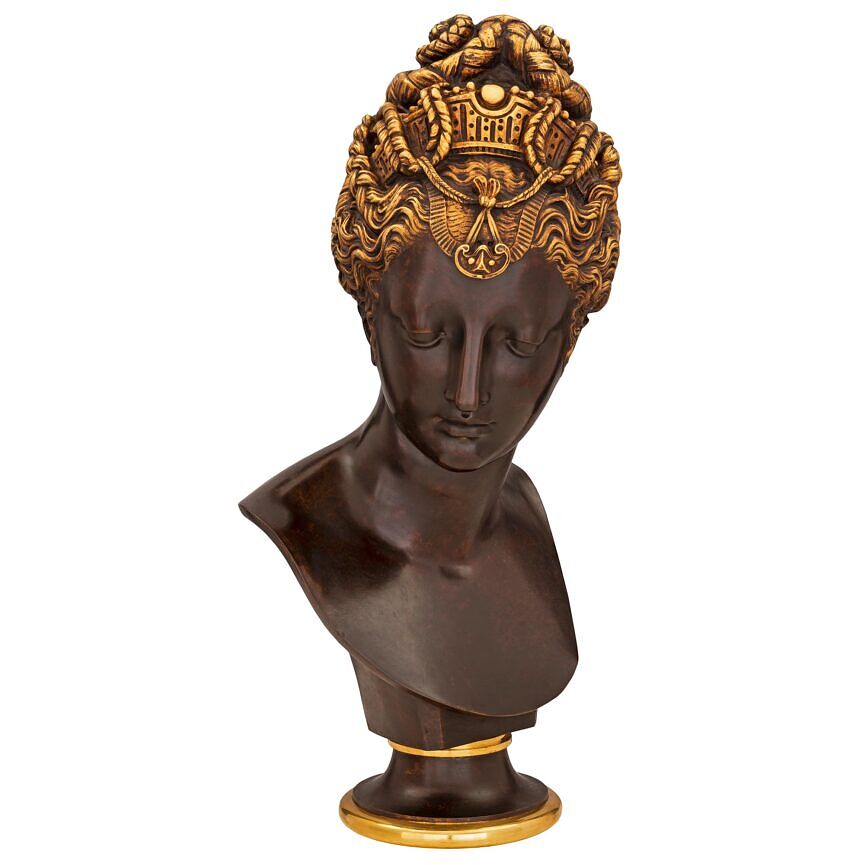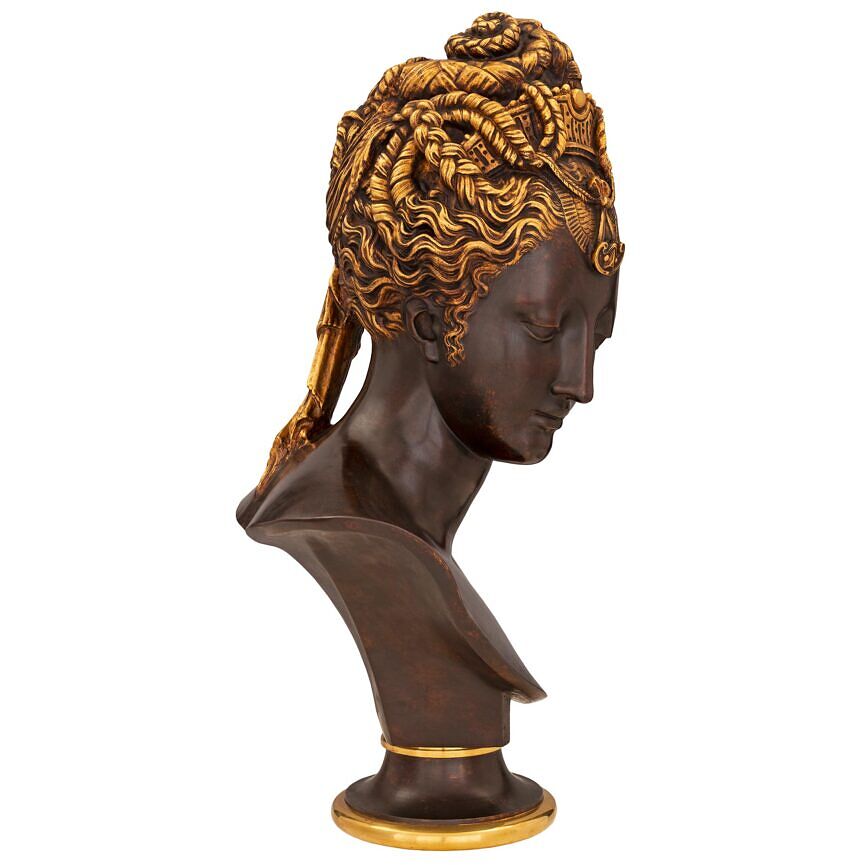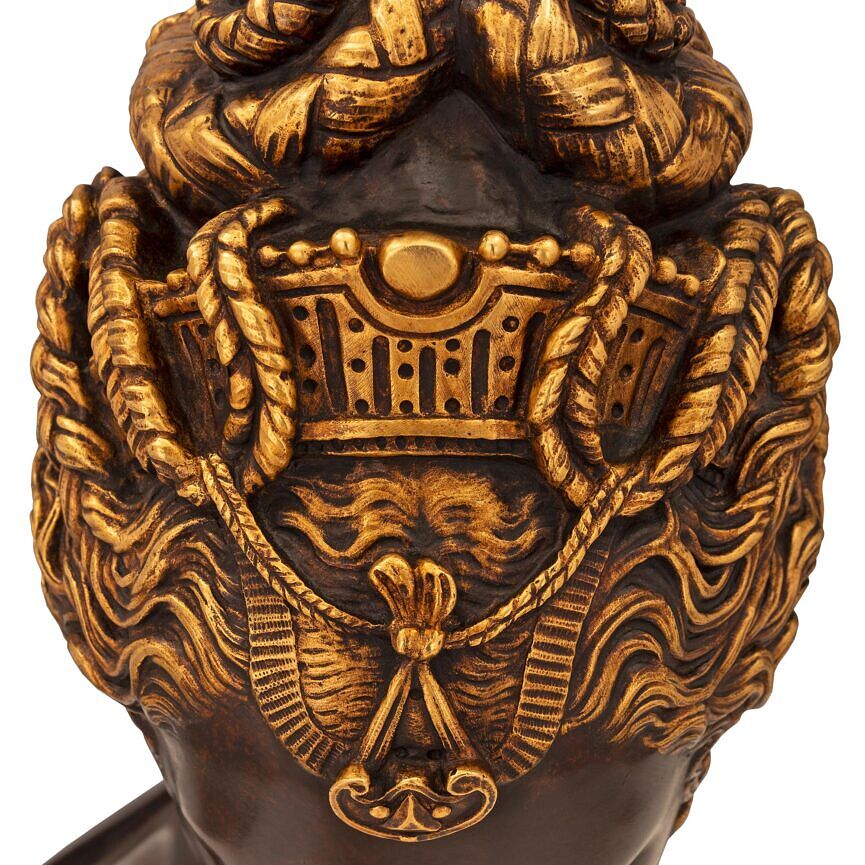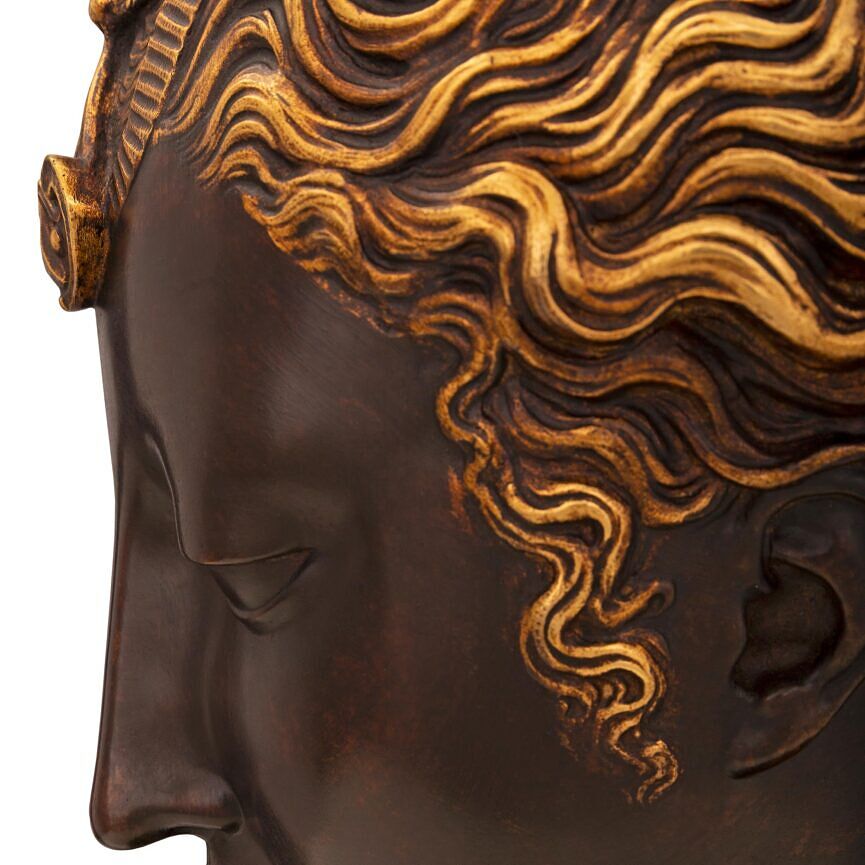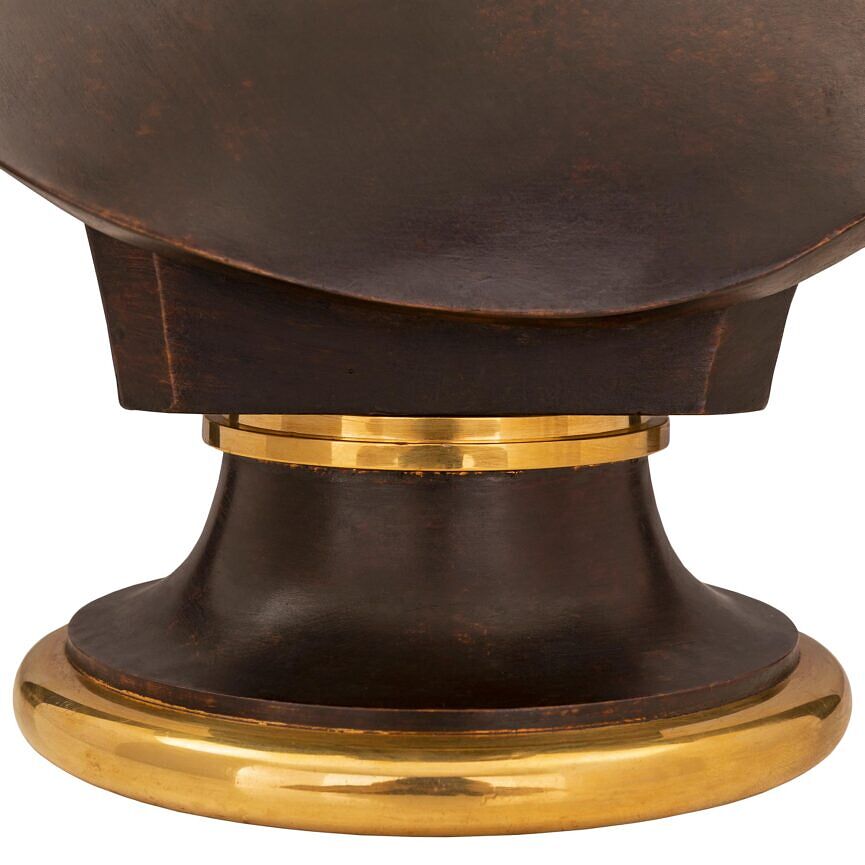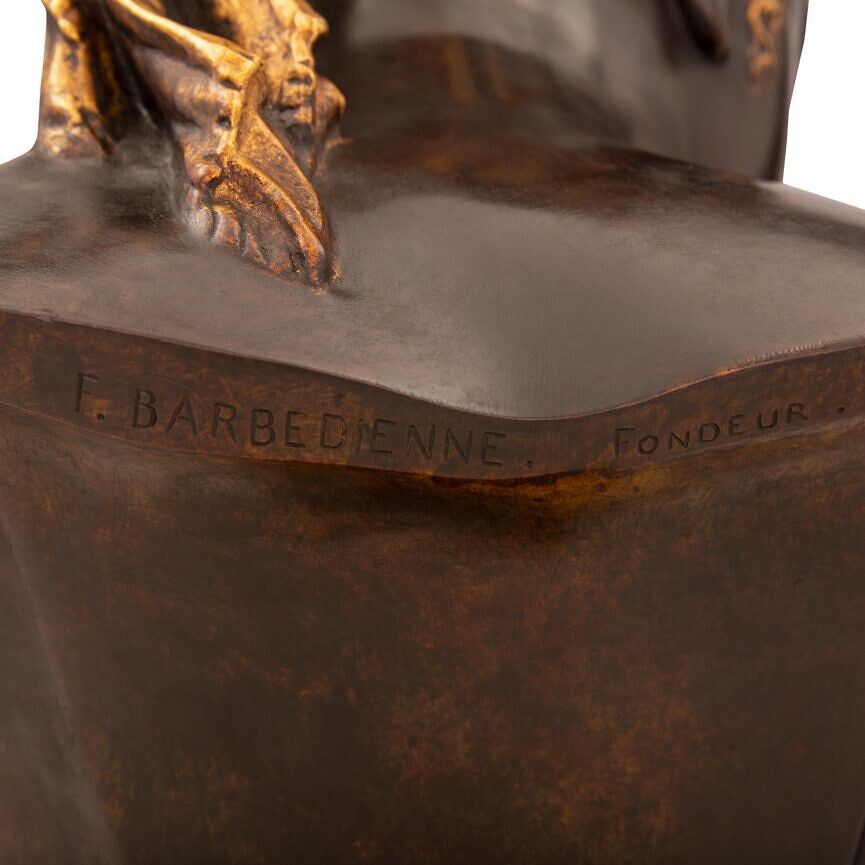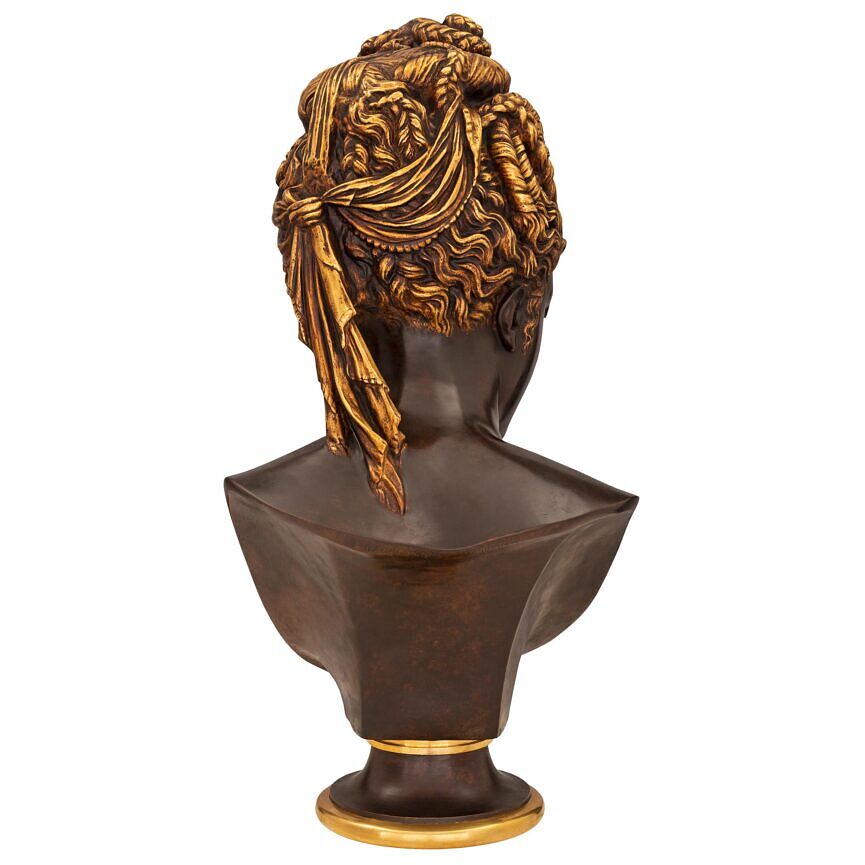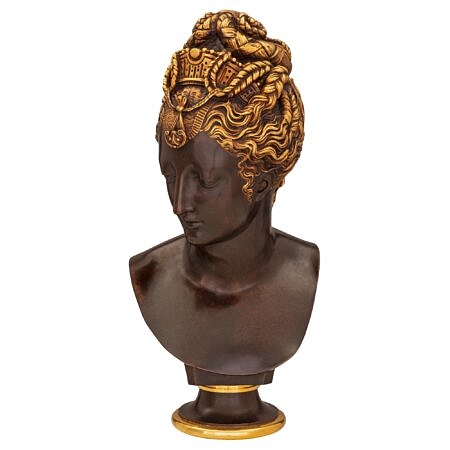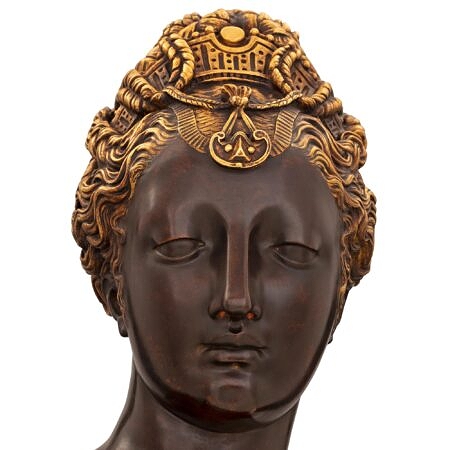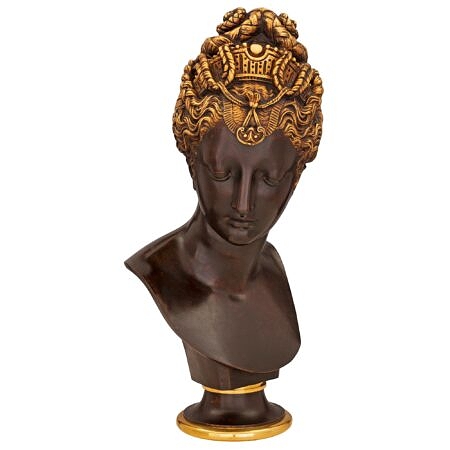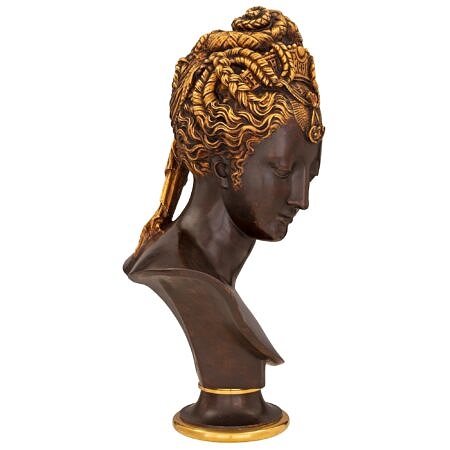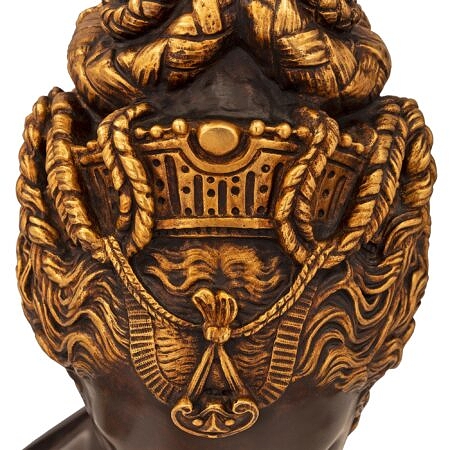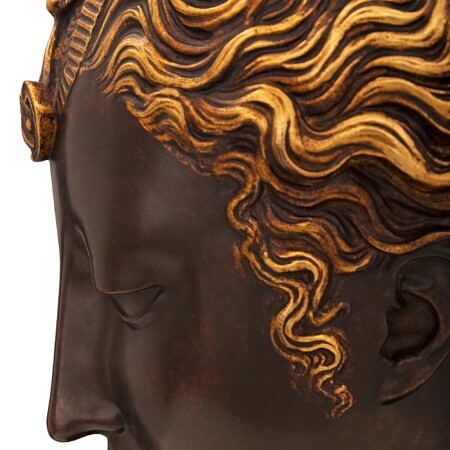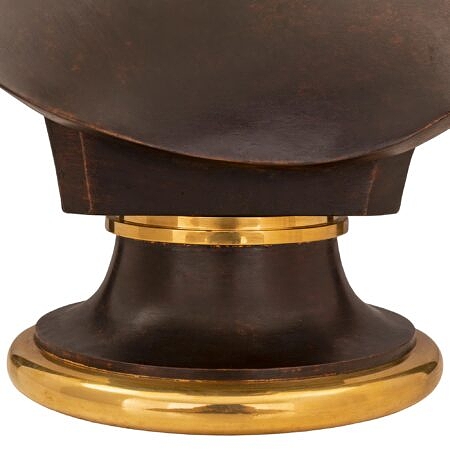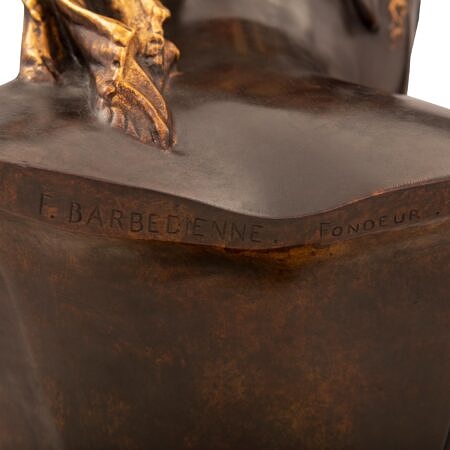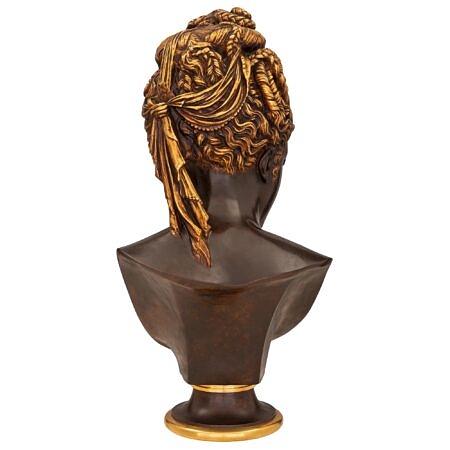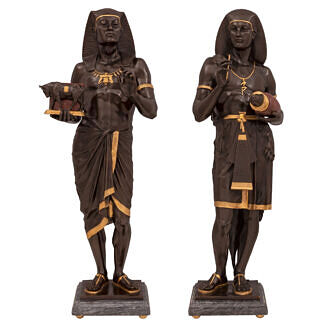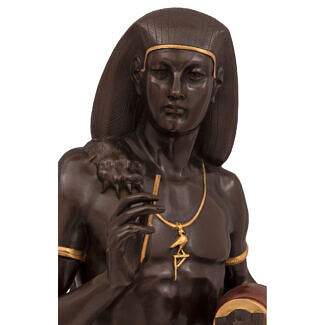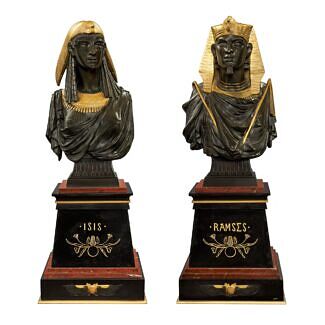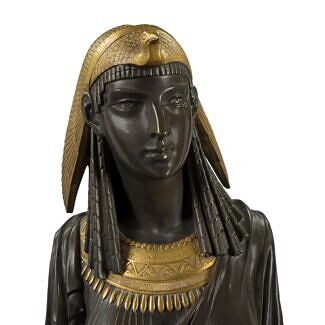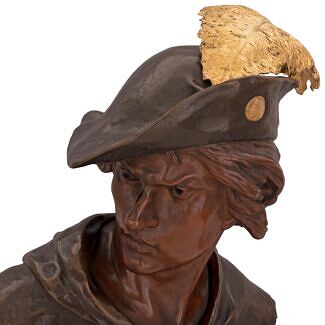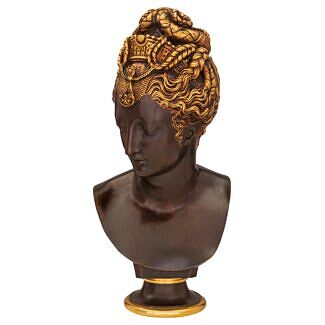A French 19th century Egyptian Revival st. Belle Époque period patinated bronze and ormolu bust, signed by F. Barbedienne
List: $12,800.00
An exceptional French 19th century Egyptian Revival st. Belle Époque period patinated bronze and ormolu bust, signed by F. Barbedienne. The wonderful bust is raised by an elegant circular base with a fine wrap around ormolu band below the socle... — Read More
An exceptional French 19th century Egyptian Revival st. Belle Époque period patinated bronze and ormolu bust, signed by F. Barbedienne. The wonderful bust is raised by an elegant circular base with a fine wrap around ormolu band below the socle shaped pedestal support. The bust depicts a beautiful maiden with her hair tied in an intricate updo with a superb crown and foliate designs. — Read Less
- Item # 11633
-
H: 21.5 in L: 10.25 in D: 10.75 in
H: 55 cm L: 26 cm D: 27 cm
- France
- 19th Century
- Ormolu, Patinated Bronze
- Belle Époque Period Read More, Egyptian Revival st. Read More
- Ferdinand Barbedienne Read More
Related products
-
# 11298 - H: 30" L: 11" D: 10"
-
# 10567 - H: 20" L: 7" D: 7"
-
# 11545 - H: 26" L: 14" D: 12"


